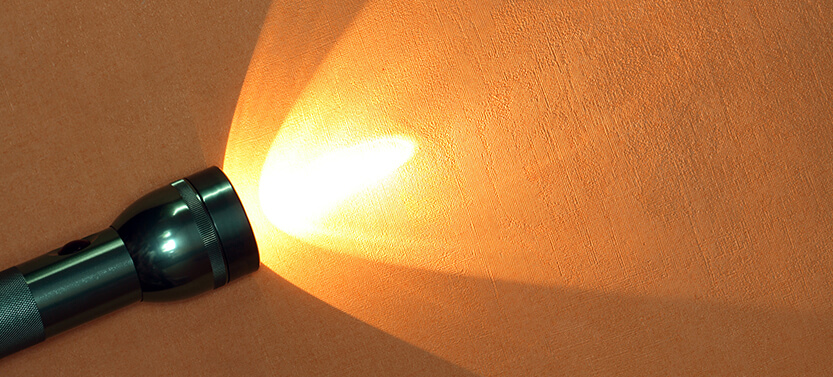BE PREPAREDYour electricity suddenly stops working. Your house is dark. Sounds you hadn't noticed earlier appear. It's time to …
Continue Reading about Which Type of Flashlight Is Best for Urban Survival?
With a focus on urban survival
BE PREPARED
Your electricity suddenly stops working. Your house is dark. Sounds you hadn’t noticed earlier appear. It’s time to grab a flashlight, but do you have the right one … and do you know where it is? Here’s how to choose the best urban survival flashlights to help you stay safe and calm.

First, let’s look at the factors you’ll want to consider before choosing the best urban survival flashlight:
You may think price is the most important factor in your urban survival flashlight selection, but when your power fails and every room in your home goes dark … you’ll want a flashlight that does what you need it to do and will get you through the outage. Most of the time, you’ll only need handheld light for a few hours, but it’s not uncommon for storms or other natural disasters to knock the power out for days or even weeks.
The sooner you’re equipped with the right urban survival flashlight, the better you’ll feel and the more you’ll be able to protect and shelter your family. There are times other than power outages when a good flashlight can prove to be one of the best friends you’ve ever had, though. Let’s talk about that.
We’ve mentioned the primary criteria: size, power source, construction materials, performance, and special features. Making the best choice for your situation will also depend on … well, the situation.
The most amazing thing about urban survival flashlights is that most of us aren’t properly equipped with them. We only realize our mistake when it’s too late — when we desperately need light. Flashlights are relatively inexpensive and readily available. If you’re just beginning to gather survival gear, this is an excellent place to start.
We’ve listed five major use categories — power failure, camping, hiking, car travel, and emergency preparation — but if you choose your urban survival flashlights carefully, your strategy can be simple and effective.
Here’s the Hunker Bunker plan:
Keep small, inexpensive flashlights strategically located throughout your home. You’ll especially want one alongside each bed, in the kitchen, and in the family room. Battery-powered lights are fine, but you will want to check those batteries regularly and replace them when needed. You’ll also want to keep a supply of the right-sized batteries on hand. One of my flashlights operates on solar and/or crank. Another uses a rechargeable battery that can be charged via a USB connector. Two others are battery power only.
You’ll find flashlights in all sorts of stores — everyplace from Walmart to Home Depot. And any light (with power) is better than no light at all. One thing to definitely do: Test the light to make sure it is working. Try it in the dark to get a feel for how well it performs. You might even drop it to see if it holds up to impact.
I ran out of patience with standard flashlights, so the cheap models aren’t my favorite — but, hey, if they work for you … that’s what counts. Fact is, you don’t have to spend a whole lot more to upgrade from a junk model to a trustworthy, well-made light.
Here are a few suggestions:
Whichever light system you choose … don’t wait to get going with this. Trust me … a few days without electricity and you’ll be glad you have a flashlight that works.
A few more tips: You seldom need to leave a light on all the time … even when you’re hiking a trail. I like to use the light to illuminate the path, then switch if off until I need it again (normally, you’ll have light from the heavens to help out). Keep candles available for hours of lighting, but draw power from your batteries only when you really need to. And don’t forget to keep a supply of fresh batteries on hand.